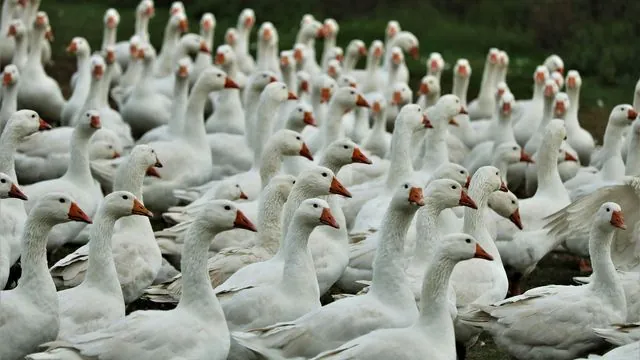
Avian Flu Mutations Raise Concerns, But Antivirals Still Hold Strong Against H5N1
2025-01-15
Author: Wei
A groundbreaking study by researchers from the Texas Biomedical Research Institute (Texas Biomed) has revealed alarming mutations in a strain of avian influenza (H5N1) isolated from a human in Texas. This particular strain exhibits a series of mutations that enhance its ability to replicate in human cells, leading to more severe disease in laboratory mice compared to strains previously found in dairy cattle. The findings, published in Emerging Microbes & Infections, underscore the virus's potential to evolve rapidly when it crosses into new hosts.
As H5N1 continues to spread, notably seen in an outbreak that began infecting dairy cows in the spring of 2024 and has since affected multiple states, public health officials are keenly watching its interactions with humans. Though most cases in people thus far have resulted in mild illness, including eye inflammation, there is growing concern about the possibility of the virus mutating to facilitate human-to-human transmission. The first reported death from H5N1 in the U.S. occurred in January 2025, emphasizing the seriousness of the situation.
Dr. Luis Martinez-Sobrido, a Texas Biomed professor and an expert in influenza viruses, highlights the urgency: "The clock is ticking for the virus to evolve to more easily infect and potentially transmit from human to human, which would be a concern." Research teams are rigorously testing FDA-approved antivirals, and thankfully, the mutations identified in the human strain have not diminished the effectiveness of these treatments.
In a comparative analysis, researchers focused on specific mutations in the H5N1 strains from humans and cattle. The human strain possessed nine distinct mutations absent in the bovine strain, indicating these alterations occurred after human infection, contributing to a more severe disease profile. In mouse studies, the human strain showed a greater capacity for replication and higher viral loads in brain tissue, suggesting a worrying trend in pathogenicity.
As part of an emerging strategy to combat potential outbreaks, Dr. Martinez-Sobrido advocates for robust antiviral responses as a critical line of defense before vaccines can be rolled out widely. With no preexisting immunity against H5N1 in the population and seasonal flu vaccines showing limited effectiveness against this strain, the stakes are high.
In ongoing efforts, the Texas Biomed team is delving deeper into the physiological implications of the mutations, aiming to identify key factors that enable H5N1 to infect a diverse range of mammals. Notably, they seek answers regarding why the virus typically causes mild disease in cows, yet can be fatal in felines, and why infections in humans from cows appear to be less severe than those from birds.
Dr. Ahmed Mostafa Elsayed, a staff scientist who contributed to the study, stresses a proactive approach to mitigate risks. "A key priority will be to eradicate bird flu from dairy cows to minimize risk of mutations and transmission to people and other species," he emphasized. Suggested measures include enhanced sanitation practices in dairy operations and stricter quarantine protocols, which could significantly reduce the virus's spread among livestock.
As the avian flu landscape evolves, it becomes increasingly crucial for both health officials and the public to remain informed and vigilant regarding this unpredictable virus. The implications of these findings cannot be overstated, and ongoing research will be vital as we navigate the complexities of H5N1's potential impact on human health.


 Brasil (PT)
Brasil (PT)
 Canada (EN)
Canada (EN)
 Chile (ES)
Chile (ES)
 Česko (CS)
Česko (CS)
 대한민국 (KO)
대한민국 (KO)
 España (ES)
España (ES)
 France (FR)
France (FR)
 Hong Kong (EN)
Hong Kong (EN)
 Italia (IT)
Italia (IT)
 日本 (JA)
日本 (JA)
 Magyarország (HU)
Magyarország (HU)
 Norge (NO)
Norge (NO)
 Polska (PL)
Polska (PL)
 Schweiz (DE)
Schweiz (DE)
 Singapore (EN)
Singapore (EN)
 Sverige (SV)
Sverige (SV)
 Suomi (FI)
Suomi (FI)
 Türkiye (TR)
Türkiye (TR)
 الإمارات العربية المتحدة (AR)
الإمارات العربية المتحدة (AR)